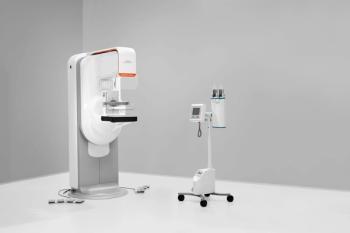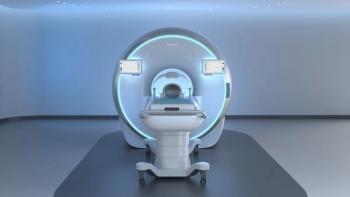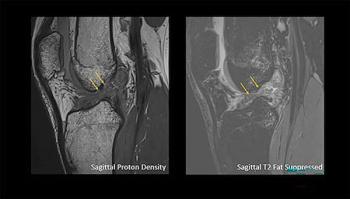
Shimadzu takes hybrid path in MRI with push for greater market share
Shimadzu will start hiring MRI sales representatives this monthas the Japanese medical imaging vendor drives to expand its positionin the U.S. market. Shimadzu Medical Systems of Gardena, CA, tookresponsibility for MRI away from CT and x-ray products
Shimadzu will start hiring MRI sales representatives this monthas the Japanese medical imaging vendor drives to expand its positionin the U.S. market. Shimadzu Medical Systems of Gardena, CA, tookresponsibility for MRI away from CT and x-ray products last monthand created a dedicated MRI division. Ultrasound will continueto function as a dedicated division selling through a separatedealer network in the U.S.
Providing a separate organization for the MRI business willoffer Shimadzu the advantage of a focused sales and marketingeffort. Perhaps more importantly, however, the operational splitenables Shimadzu to sustain its relationship with existing x-raydistributors and dealers for sales of CT and x-ray products, whileallowing the MRI division to travel the sales route most appropriateto that imaging modality.
Shimadzu will not convert totally to direct sales of MRI systems,according to Mark Silverman, the veteran medical imaging executivehired last month as MRI division director (SCAN 6/2/93). The vendorplans to implement a hybrid direct/distributor/
dealer system, picking the option that performs best for particularareas.
Direct sales will be used first to fill in geographic areasnot being covered, but Shimadzu will eventually replace x-raydealers not interested or proficient in selling and servicingMRI, he said.
"My approach is performance-oriented," Silvermantold SCAN. "Those who are qualified and get the job donewill be with us, whether they are dealer, distributor or direct."
The history of hybrid sales strategies in the U.S. has beena checkered one, however. Other MRI vendors have tried this tackin the past with less than stellar results. The balance tendsto shift eventually to development of a direct sales organizationproviding national coverage.
"History has shown that, in over 80% of the cases wherecompanies use both distributors and direct sales, sooner or laterthey become greedy," said Frank McMurray, president of RadiologicalSpecialists (RSI) of Van Nuys CA. "They want to move intothe areas where they have successful dealers."
RSI was Shimadzu's West Coast x-ray distributor until its contractwas terminated in 1989. A suit against Shimadzu filed by RSI overissues involved with the distribution termination was settledin 1992. The imaging vendor now does business directly with dealersin the western U.S. and in the central region, which was formerlyhandled by another distributor, U.S. Imaging of Carol Stream,IL.
A suit filed by U.S. Imaging remains in the courts, accordingto president Peter Dawes. Dawes ran two businesses that were totallydependent on the Shimadzu relationship, U.S. Imaging and ProfessionalX-ray, an Ohio dealership. Ironically, Dawes is president of CarolStream Imaging, one of the first imaging centers to operate Shimadzu's0.5-tesla SMT MRI system--and he raves about the scanner.
Shimadzu delivered the magnet to Carol Stream in October 1990,the same month U.S. Imaging was dropped.
"It (the breakup with Shimadzu) was unfortunate. The equipmentis excellent," Dawes told SCAN. "I have perhaps thecheapest operating magnet in the world. It provides amazing service,and the cryogen use is excellent."
Holding the threat of direct sales over dealers can be self-defeatingfor a scanner vendor, he said.
"You can't step on your dealers. If (vendors) do that,the dealers get disheartened and don't sell much," Dawessaid.
In the past, Shimadzu has created confusion in the market byseeming to veer between its commitment to U.S. distributors anda desire to build a direct sales presence. Mario R. Carranza,a former GE and Toshiba executive, was hired six years ago byShimadzu as vice president of sales and marketing in an apparentattempt to build a direct U.S. sales presence. He left two yearslater as Shimadzu indicated it was reinforcing its commitmentto its U.S. distributors (SCAN 9/13/89).
At that time, however, Shimadzu did not have an MRI systemapproved by the Food and Drug Administration. When the 0.5-teslasystem was approved, MRI sales flowed to the CT distributors anddealers, not all of whom were up to speed with the technology.
SMS has maintained its relationships with one Canadian andtwo other U.S. distributors: Christie/InnoMed of Quebec; SoutheastImaging of Savage, MD; and Atlantic Diagnostic of Bedford, NH.
Shimadzu's MRI technology has been well received, but unfocuseddistribution has meant that only about 20 MRI systems have beeninstalled in North America, Silverman said. Shimadzu hopes tobuild a 10% market share in U.S. MRI sales over the next threeyears.
"That is an achievable number for a company like Shimadzuto realize over a several-year period," he said. "Butwe need more uniform distribution across the country. We needto make sure that, in every geographic area of the United States,we have a highly qualified and aggressive MR sales effort."
Newsletter
Stay at the forefront of radiology with the Diagnostic Imaging newsletter, delivering the latest news, clinical insights, and imaging advancements for today’s radiologists.




























